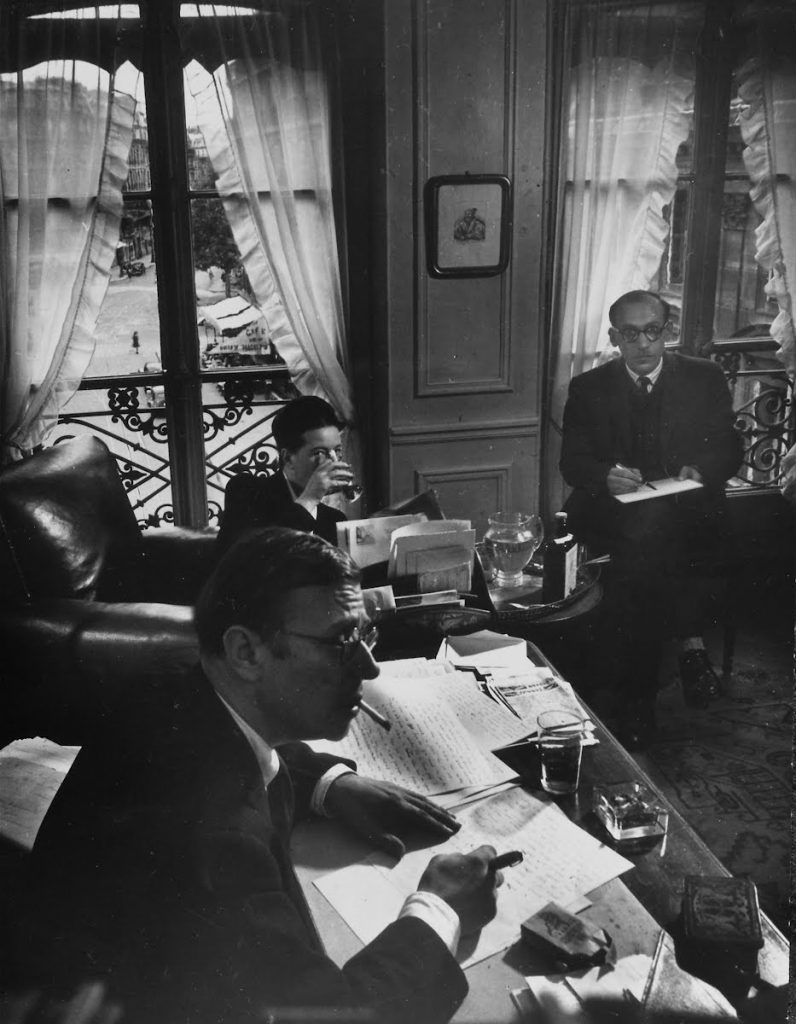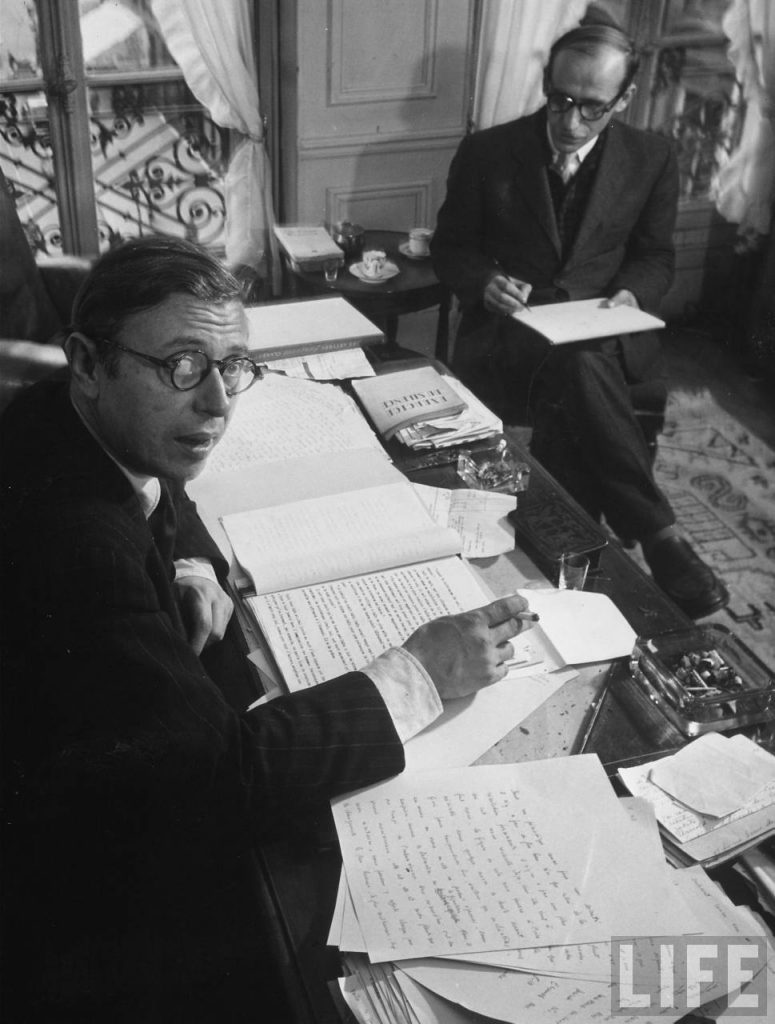 (Türkçesi) In the summer of 1946, Jean-Paul Sartre was 41 and becoming famous. At the time the photo was taken, he had just come back from and existentialism tour of the United States. With fame, came money, and that summer Sartre bought a Paris apartment for his mother, in St Germain, overlooking the cafe Les Deux Magots. Until then Sartre and Beauvoir had lived almost exclusively in hotel rooms, eating and working in cafes, like Les Deux Magots, and the Flore, nearby. But now he’d moved in with his mother, set up an office for himself, and hired a secretary, who worked in the room next door. Beauvoir worried that these changes would cost them their freedom.
(Türkçesi) In the summer of 1946, Jean-Paul Sartre was 41 and becoming famous. At the time the photo was taken, he had just come back from and existentialism tour of the United States. With fame, came money, and that summer Sartre bought a Paris apartment for his mother, in St Germain, overlooking the cafe Les Deux Magots. Until then Sartre and Beauvoir had lived almost exclusively in hotel rooms, eating and working in cafes, like Les Deux Magots, and the Flore, nearby. But now he’d moved in with his mother, set up an office for himself, and hired a secretary, who worked in the room next door. Beauvoir worried that these changes would cost them their freedom.
At 38, Beauvoir had already published several novels and essays, but she had not achieved the same degree of fame as Sartre. At the time the photo was taken, Beauvoir had just finished writing the Ethics of Ambiguity, and was at a loss what to do next. Impatient to write, but without a topic, she was, by her own account, moody and often snapped at her friends. One of them, the sculptor Giacometti, suggested she just write, write anything. A few weeks later, Beauvoir started to research what would become the Second Sex. In the photo, however we sense that she hasn’t quite shaken off those negative feelings.
The day the photo was taken, Sartre and Beauvoir were working in Sartre’s office in his mother’s flat. They had two visitors. One was Saul Steinberg, the New Yorker cartoonist who had just arrived in Paris with his wife, Hedda, and been introduced to Sartre and Beauvoir by Giacometti. On another photo taken the same day, he can be seen sketching Sartre. Unfortunately, the three did not hit it off, and he did not even show them the sketches he drew that day.
The second guest was the Albanian-American photographer, Gjon Mili, working for Life Magazine and preparing his Paris exhibition. Sartre, a fan of his work, wrote the introduction to the catalogue for the exhibition:
“Mili makes each photograph a test: according to him, there are as many ways to get photographed as they are men. If you take his test, he will not only have pinned you alive into his collection but observed you. He will know you: you will have put yourself doubly in his hands. The primitives of the South Seas refuse, they say, to let themselves be photographed; it seems to them they’re being captured and locked up forever. Look at Mili’s photograph of Molotov and you will understand their wisdom.” (source)
Fifteen years or so later, Steinberg came back to Paris for his own exhibition. He suggested to his agents that they ask Sartre to write the introduction to his catalogue, because, he said, his and Sartre’s works were similar. Sartre declined. (source)

© Sandrine Berges (20 May, 2017)
